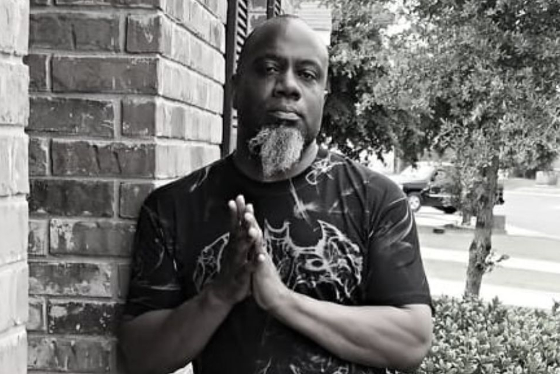
1. “I write stories for myself.”
Wrong. This is a common mistake. A professional writer never writes a story for themselves. If that were the case, those stories would stay on your hard drive or in your notebooks, never to be seen by anyone but you. Instead, you should write for the perfect audience. The audience is not you, but very much like you, with similar tastes. Write for them.
2. This brings us to another basic cliched rule of writing…”My stories are for everyone who wants to read them.”
Wrong again. If you try to aim a story at “everyone,” you will please no one. Not everyone will be interested in your horror, comedy, science fiction, anime, superhero, or action-adventure. Not everyone will even like you, and that’s fine. Determine who your target market is and aim your narrative accordingly.
3. Yet another common misconception of writing – “I am my only competition.”
Still wrong. If you are writing a graphic novel or comic, it doesn’t matter how small and independent you are; you are putting your book up against Batman and the X-Men. The audience usually has a limited book budget and will generally seek something out that they know. You must give them a reason to take a chance on your unknown book of $3.99 (or more). As Brandi Carlile said, “The difference between successful artists and unsuccessful ones is audacity.” You must create a unique spin on a base storyline that captures attention.
Side Note: People DO judge a book by its cover. When a shopper is looking for books, the cover art is what captures attention. You have less than a three-second window to keep it before they pass you by. Make that count.
Let’s toss out another false rule of writing…
4. “I only write when I feel like it, so it’s my best work.”
Totally wrong. A first draft is never going to be your best work. My mantra is: discipline is more important than inspiration. The reality is that you will not always have rainbows and liquid gold flowing from your fingertips when writing. There will be times when you are not up to the task. Do it anyway. If the only thing you can generate is garbage, then write garbage. Note that I didn’t say PUBLISH garbage—I said WRITE garbage. Then you edit, edit, edit, and refine, refine, refine. If you write a page of total trash and get one good sentence or solid idea from it, then it’s worth it. If you get nothing good, that’s fine too. A good editor will help you here. You need a second set of eyes to pick up your mistakes and keep your ego in check. Your story is never as good as you think it is. The point is that you control your
writing. Do NOT allow it to control you.
5. What is a good rule of writing? Put your main character through hell.
Correct. Your character needs an adversary that can beat them. They also need something besides the antagonist in their life that gives them a challenge. Spider-Man is exciting and gives us the thrills of a good fight, but the reader doesn’t care about Spider-Man—they care about Peter Parker. The horrors of his personal life are just as intriguing as going against the Green Goblin. We don’t always have to agree with the protagonist in everything they do, but we need to be able to invest in them. This is what has carried The Punisher for all these years.
6. Here’s another solid rule of writing: Make your characters distinctive.
Definitely correct. It’s essential that your characters stand apart from each other. Give them different looks. You know who Wolverine is just by his silhouette. Play with their speech patterns. Even if Yoda isn’t pictured, you know him by his voice and unique grammar structure. How they react to different scenarios is also key. The persona of Deadpool in a crisis will be markedly different from the Silver Surfer. Know their backstories and what motivates them. Draw from the people around you. When you listen, people will always inspire you with their personalities.
7. This is the premier rule of writing: Make them want to buy the next book.
All the way correct. Good writing aims to hook your reader from the very first page. You have attained your final goal when your reader finishes your book and comes back wanting more. You are not just a writer—you are a marketer.
8. Here’s my final rule of writing that feeds from rule seven. You are just as much the product as your book.
Absolutely correct. When you are a writer, you are not just a writer. You are a businessperson in this industry who must learn how it operates. Forget the Field of Dreams mantra. If you build it, they will NOT come. You must make yourself visible. This will not be easy or done overnight. Consider how you will market your books, where you will market your books, and the costs involved.
9. Learn the rules… Then, to be successful, learn how to break them.
Even if they are my rules. (I broke my own eight rules by telling you there were eight, but then gave you nine. This extra one is free.)
I hope you find something of use in my ramblings. May Jah bless you all.
About Adrian “Asia” Petty
Adrian “Asia” Petty is the writer and Director of Jericho Projects and has been an independent publisher for 14 years. Credits include the comic series Ms. Johnni, the photo novels, Dekadence and Avörya, and the fumetti, Avörya. Jericho Projects’ bestselling graphic novel Appalachian Assassin is published through London-based publisher, Markosia Enterprises. Adrian also wrote a Ms. Johnni short story for the Red Giant Entertainment compilation book, Japan Needs Heroes.
Jericho Projects’ social media links and all information on book sales and updates can be found at Instagram @jerichoprojects or AllMyLinks.com/JerichoProjects.

